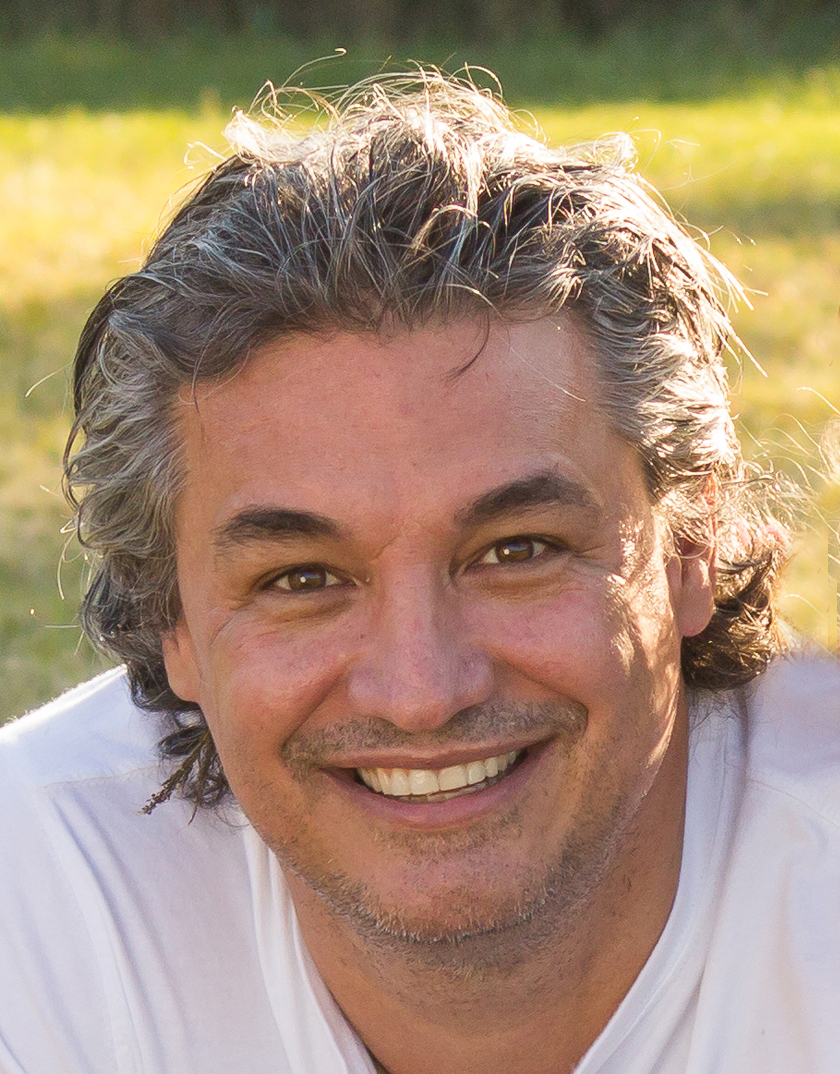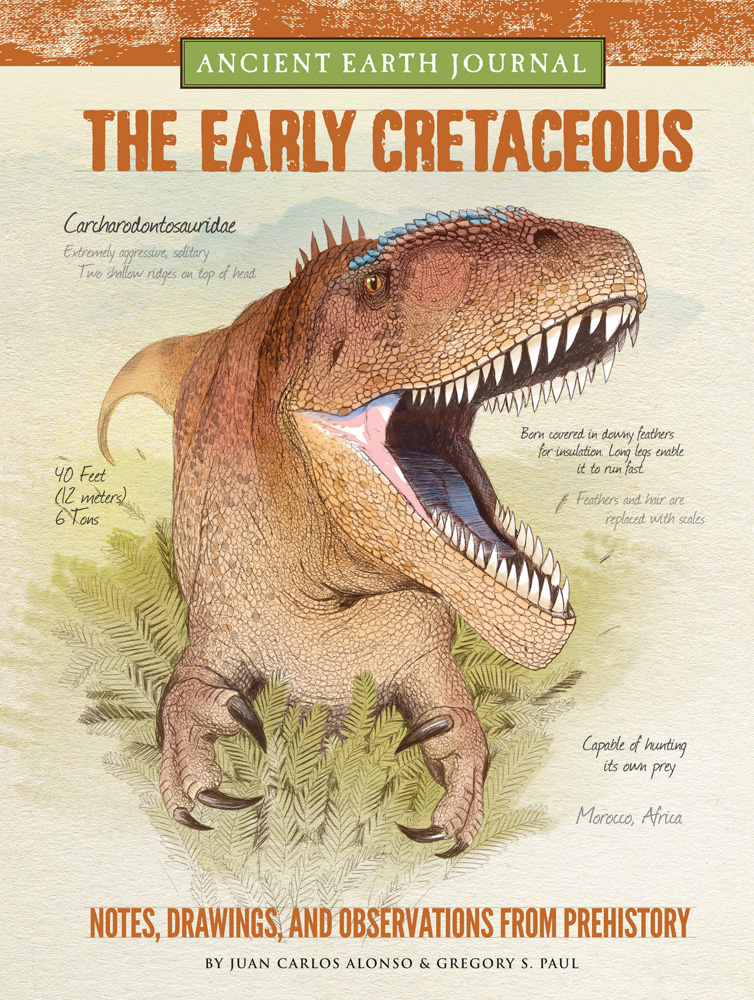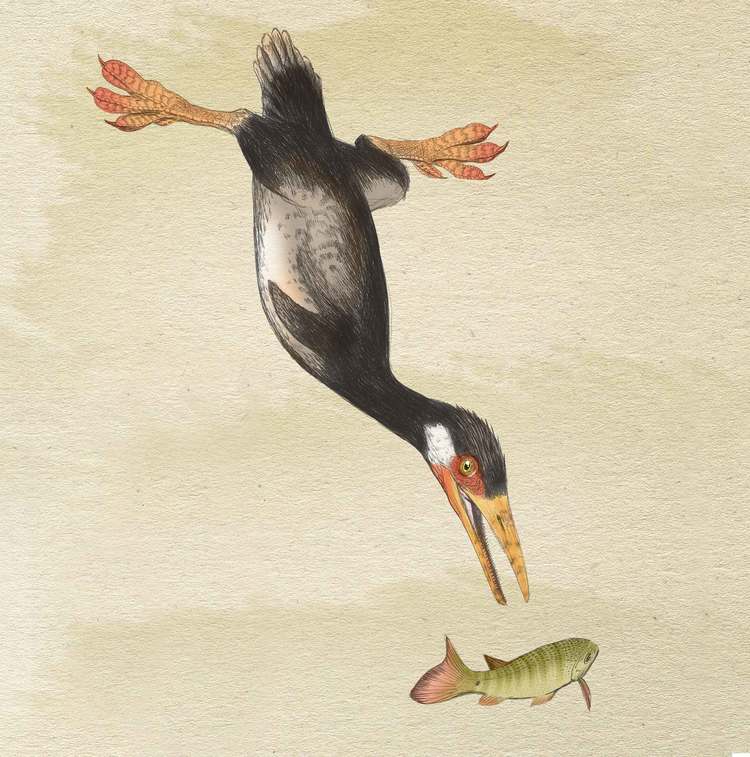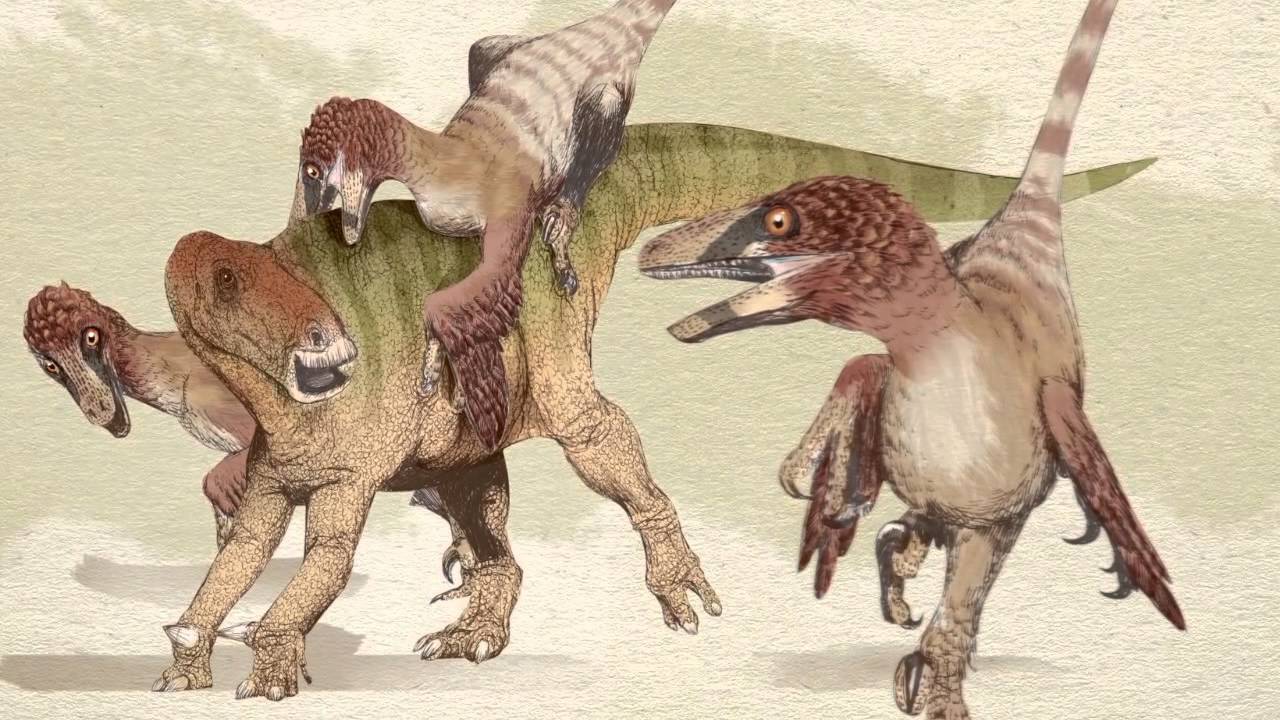 Juan Carlos Alonso co-authored “Ancient Earth Journal: The Early Cretaceous” with Gregory S. Paul. He has over 30 years experience in the graphic design/illustration field. His passion for nature has taken him around the world from Australia to the Galapagos Islands to study animals. Along with his work in the graphic arts, he is also an accomplished wildlife sculptor focusing mostly on prehistoric animals. The following is complete transcript of his interview with Cracking the Cover.
Juan Carlos Alonso co-authored “Ancient Earth Journal: The Early Cretaceous” with Gregory S. Paul. He has over 30 years experience in the graphic design/illustration field. His passion for nature has taken him around the world from Australia to the Galapagos Islands to study animals. Along with his work in the graphic arts, he is also an accomplished wildlife sculptor focusing mostly on prehistoric animals. The following is complete transcript of his interview with Cracking the Cover.
You have been a graphic designer and illustrator for years, what made you want to branch out into writing a book?
I’ve always admired scientific illustrators and nature books throughout my life, especially dinosaur books. My interest in writing a book didn’t reawaken until about 5 years ago, when my daughter was 2 years old. I would read her books and watch the way she was viewing the world. So much curiosity and wonder, it was so pure. This made me want to write the book that I wanted as a child, one that appealed to my sense of wonder. It has been an amazing experience taking things I’ve learned professionally and the passion I have for prehistory and putting them together. It was a very natural and rewarding process.
Why write for young people?
Well, I think the fact that I was inspired by these types of books as a child makes me want to share my work with children. There is something so universal about dinosaurs, you can talk to a child off the street in China and ask him or her their favorite dinosaur and chances are they’ll have one. In any part of the world in any language, children gravitate towards dinosaurs. I’m not exactly sure why, but I think it has a lot to do with their size, fierceness and the fact that they are no longer around – part science, part imagination.
 Why choose nonfiction as opposed to fiction?
Why choose nonfiction as opposed to fiction?
Originally I started by writing a fiction book. A completely different book than Ancient Earth Journal. I really wanted to make my representations of these animals as scientifically accurate as possible. As I researched which dinosaurs coexisted with one another, I became more and more interested in this slice of time in which the book took place. Ultimately I decided to create a non-fiction book that focused on the time period, in this case the Early Cretaceous, and tried to build the world as it was during this period. The Mesozoic Era lasted roughly 165 million years. There is a greater time span between some dinosaur species, than there is between humans and dinosaurs. I felt why not show people less known species in a snapshot of what life was like during this part of the Mesozoic.
Have you always had a passion for dinosaurs?
Yes. I was obsessed as a child, and then later my interests grew towards art, painting specifically. I studied art in college and received a bachelor’s degree in fine art focusing on painting. Graphic design also interested me, so I took an entry-level job in a graphic design firm. I slowly gravitated towards graphic design as a career. I’ve been in the creative field for over 30 years now. My interest in dinosaurs began to grow again about 15 years ago. I began sculpting scale models of different dinosaur species as a hobby. It was a great endeavor, but as I grew busier with work it was difficult to dedicate the time. So eventually I stopped, but my passion for dinosaurs did not.
Why did you choose to focus on the Early Cretaceous?
I see the Early Cretaceous period as a time of evolutionary transition for many groups of animals. It was the time when first true birds and the ancestors of the first Hadrosaurs, or duck-billed dinosaurs appeared on earth. Tyrannosaur species had begun evolving, many of these species were found with fossilized feathery impressions on their skin. A lot of interesting wildlife existed during this time, including many animals with crests, elongated spines and other strange adaptations, most of which are not featured in other books. I felt it gave a good perspective from the standpoint of evolution. I believe is the first book for young readers dedicated strictly to this time period.
 How much research was involved?
How much research was involved?
Quite a bit. But for me, I really enjoyed this part. There are so many resources available now for research that it can be overwhelming but having a co-author that happens to be a preeminent researcher helps.
A lot of research has been done on the Early Cretaceous, how did you make sure you got things right?
Because these animals have been extinct for millions of years, there is a lot of guesswork and speculation when it comes to interpreting fossil records. In some cases just a few bones determine one species from another. This, by its very nature creates a lot of disagreement between scientists. There will always be some doubt about how these animals looked and behaved, but if your interpretations are based on fossil record or solid backing you can defend them. When all is said and done, it’s the perfect amalgamation between art and science.
What came first, the text or illustrations?
First I created an outline to make sure I included the animals that best represent the Early Cretaceous. They were then broken down by family: theropods, sauropods, ornithischians, pterosaurs and birds. The next step is lots and lots of research of fossil records and comparing them to living animals to determine poses and how I saw them interacting. At this point I knew the page count and worked section by section. Writing the introduction to each then the illustrations that follow.
Your co-author is Gregory S. Paul. Why did you choose to use a co-author, and how did the creative process work?
Let me start by saying that Gregory Paul is one of my heroes. He is not only a researcher, but also a talented illustrator and an accomplished author. His book Predatory Dinosaurs Of The World changed the way I saw dinosaurs. He pictured them laying down in the shade, caring for their young and even hunting in packs in the water. They became animals doing what animals do in real situations. Not just running with their mouths open like monsters. I met Greg at a local book signing for his book The Princeton Field Guide To Dinosaurs, we talked for a little bit and we ended up having dinner. That night showed him an idea I had for a book, it wasn’t until several months later that I finalized drawings to share with him and asked if he would be the co-author on the project. He agreed and here we are.
His vast knowledge of the time period and each individual species made things very smooth. I would provide him with a sketch of one specific animal, he would make his comments and together we ended up with an illustration that embodied both our visions. Same with the text, mostly I would send him a draft and he would edit by adding or removing and together it all just clicked.
 What do you hope readers come away from your book with?
What do you hope readers come away from your book with?
By dedicating the topic to just half of one time period, I hope this book will give readers some perspective on how the earth and its animals change. The animals that existed in the Early Cretaceous are very different than in periods before and after. Evolution is a slow and ever-changing process.
Are there plans for more books along these lines?
Absolutely. I hope to do many more. To the point I made about giving readers perspective on different periods of the earth, what better way to illustrate that, than to provide them with books of different time periods for comparison.
Is there a book from your own childhood that still resonates with you today?
Oh, I have a few, but I’ll share the two that I remember most. The first book I treasured as a child was The Exciting World of Dinosaurs, I kid you not, this book was given to you if you filled up your tank at a Sinclair Gas Station. I know I’m dating myself here, but come on how cool was that? I still remember the drawings – I was so impressed with them. There was one other that I can still picture, it was Dinosaurs and More Dinosaurs by M. Jean Craig and illustrated by George Solonevich. I loved that book, the illustrations were very different than what people were used to seeing.
